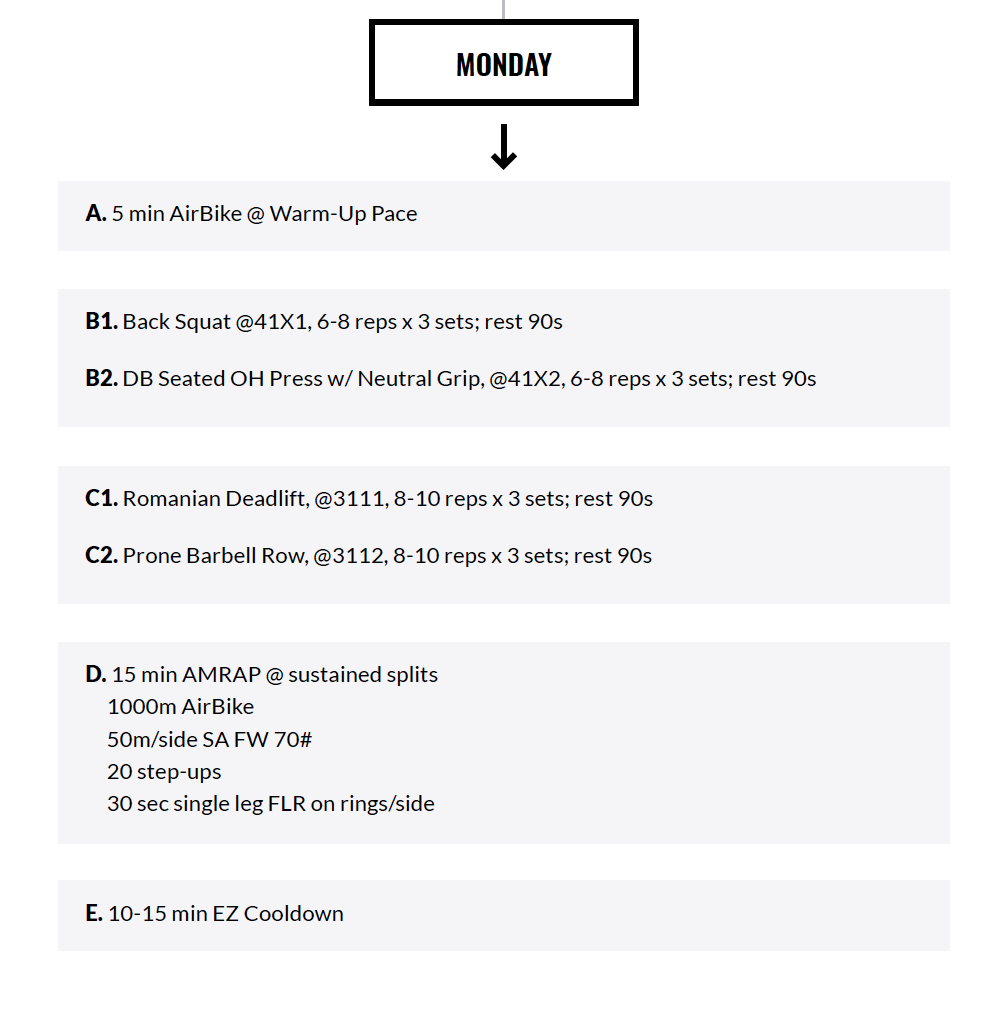HOW TO MAKE A WORKOUT PLAN IN THREE STEPS
How to Make A Workout Plan Using the Three Ps (Prioritizing, Planning, Periodizing)
Whether you’re a fitness coach or enthusiast you know a good workout when you see one. These workouts stand apart from the rest, providing results in a sustainable, pain-free experience. But these magical workouts, while commonplace in OPEX Gyms, are typically tough to come by.
However, this doesn’t mean that you have to settle for workout mediocracy. By mastering the Three Ps, a three-step approach to creating workout plans, you too can learn how to create workouts that are individualized, effective, and sustainable.
Below you will learn the basics of the Three Ps and see them applied to a sample client avatar to help you implement them in your own workout programs.
Table of Contents
An Individualized Approach
Before writing a workout plan it is important to note that all plans are not created equal. That ‘30-days to shred’ program being promoted on Instagram will not be as effective as a program specifically designed for you or your client.
To ensure the best results possible, the Three Ps follows an individualized approach, where the plan is custom-tailored to the end-user. Learn the basics of the individualized approach here.
What’s the Goal of the Workout Plan?
The first thing to consider is the goal of the workout plan. The vast majority of the population workout to get and stay healthy, and not for athletic performance. It is important to keep that goal in mind when writing a workout plan for a general population client as you want the plan to support the goal of health and not detract from it. Here are some questions you can use as a quick reference guide to ensure your workout plan is created for health.
Is this plan within my or my clients’ capabilities?
Does this plan support the goal of being able to exercise for a lifetime?
Will this plan promote mental acuity (clearness of mind) throughout the day?
Three Steps to Making a Better Workout Plan
Before writing the plan take a minute and define the Three Ps—prioritizing, planning, and periodizing—as this will influence what the plan looks like.
The Three Ps:
Prioritizing – The specific goals of the training program. These are derived from the consultation and assessment. Learn how to conduct consultations and assessments here.
Planning – The roadmap. This includes the resources, schedule, and lifestyle that it will take to reach the set goals.
Periodizing – What will be the different training phases in the plan? How will you structure accumulation, intensification, pre-competition, competition, and deload.
Client Ryan’s Sample Workout Plan
To bridge the gap between learning and implementation here are the Three Ps applied to a client avatar, Ryan. This section highlights the essential data for designing Ryan’s workout plan gathered during the consultation and assessment. Learn how to conduct consultations and assessments here.
Client Ryan
Body Assessment:
5’10”
185 lbs
12% body fat
Move Assessment:
Failed internal rotation in the scratch test
Failed overhead air squat
Work Assessment:
Goals:
Have great energy levels throughout the day
Does not want to feel beat up
Client Ryan’s Three Ps
This section highlights the Three Ps for Ryan’s workout plan. The assessment provides the plan’s priorities, while the consultation helps define planning and the periods of training.
Ryan’s Prioritizing:
Prioritize fixing overhead position. This will be done through long term exposure, time under tension, and a range of motion approach.
Identify the overtraining line. Ensure training does not interfere with daily energy levels and productivity.
Remove dynamic training. Build up the Muscle Endurance Tree from motor control to strength endurance to a maximum contraction per movement pattern.
Ryan’s Planning
Ryan can train 4 days a week and only wants to train one time per day.
Must align his training schedule with his work schedule
Monday: Resistance + Aerobic
Tuesday: Rest
Wednesday: Resistance + Aerobic
Thursday: Rest
Friday: Resistance
Saturday: Aerobic
Sunday: Rest
Continually evaluate stressors and adjust the training program accordingly.
Ryan’s Periodization:
Accumulation
High volume, low intensity, skills, slower tempo, structural balance, slow aerobic work
1-2 months
Intensification
Low volume, high intensity, faster aerobic work
3 weeks to a month
Deload
Lower volume of work
1-2 weeks
Rinse and repeat for a lifetime
Client Ryan’s Sample Weekly Training Split:
Below is Ryan’s weekly training split during his accumulation phase. In this phase, volume is higher and the intensity is lower and Ryan will focus on fixing his overhead position and building motor control.
Client Ryan’s Sample Daily Workout Plan:
Here is a sample daily workout for Ryan. On this day Ryan has full-body resistance training and aerobic training, which was determined during the planning phase. His coach is building motor control with longer tempos, high time under tension and lower intensity. The Neutral Grip DB Seated OH Press is used as a fix for scapula gliding and overhead position, one of the priorities identified by Ryan’s coach.
A Systematic Approach to Coaching
When you use a systematic approach and define the big picture of a workout program first, the finer details are easier to come by. This applies to every aspect of fitness coaching, including business practices, consultation and assessment skills, and nourishment programs.
Defining and reverse engineering from a long-term goal is the foundation of the OPEX System of Coaching. Get an introduction to this system when you sign up for The Free Coach’s Toolkit.


